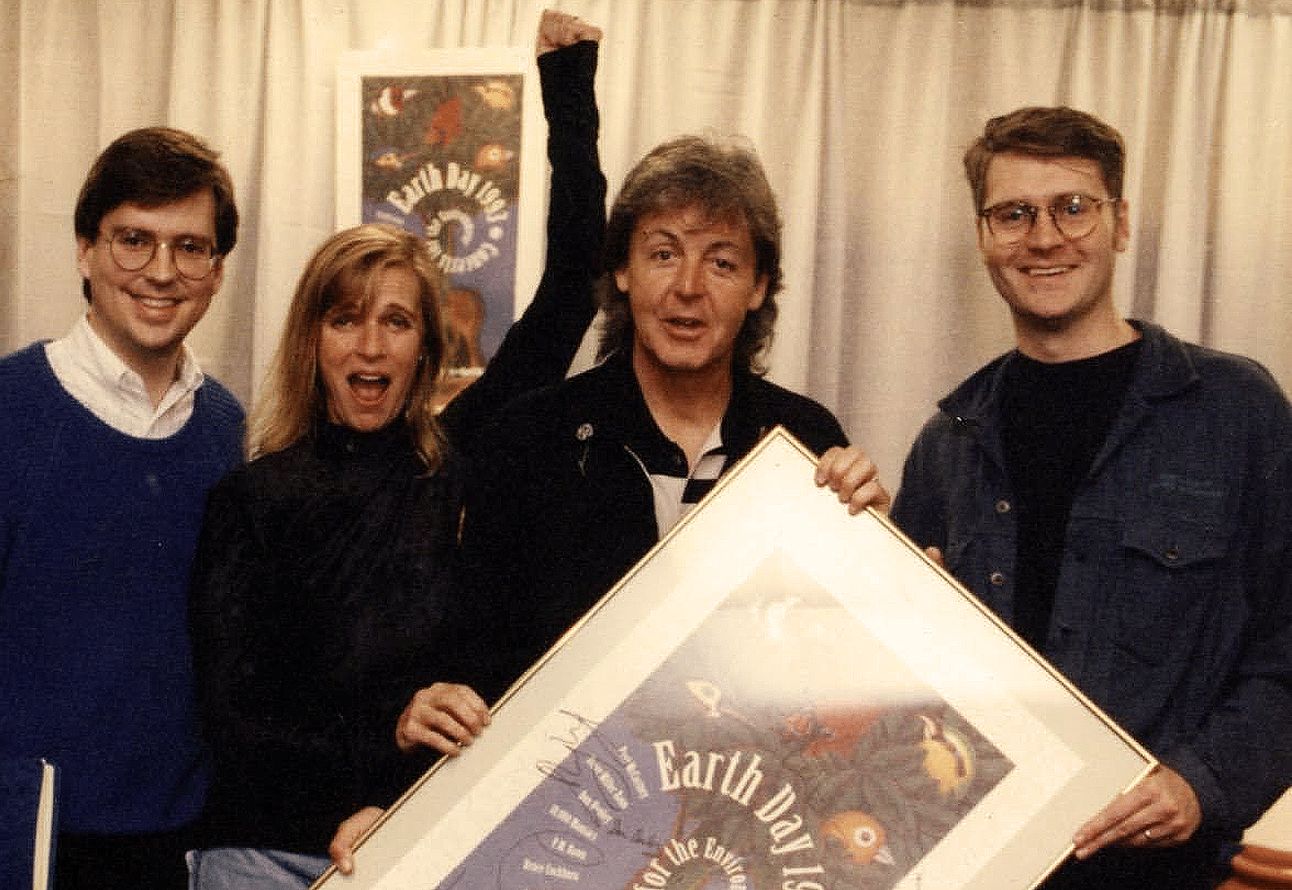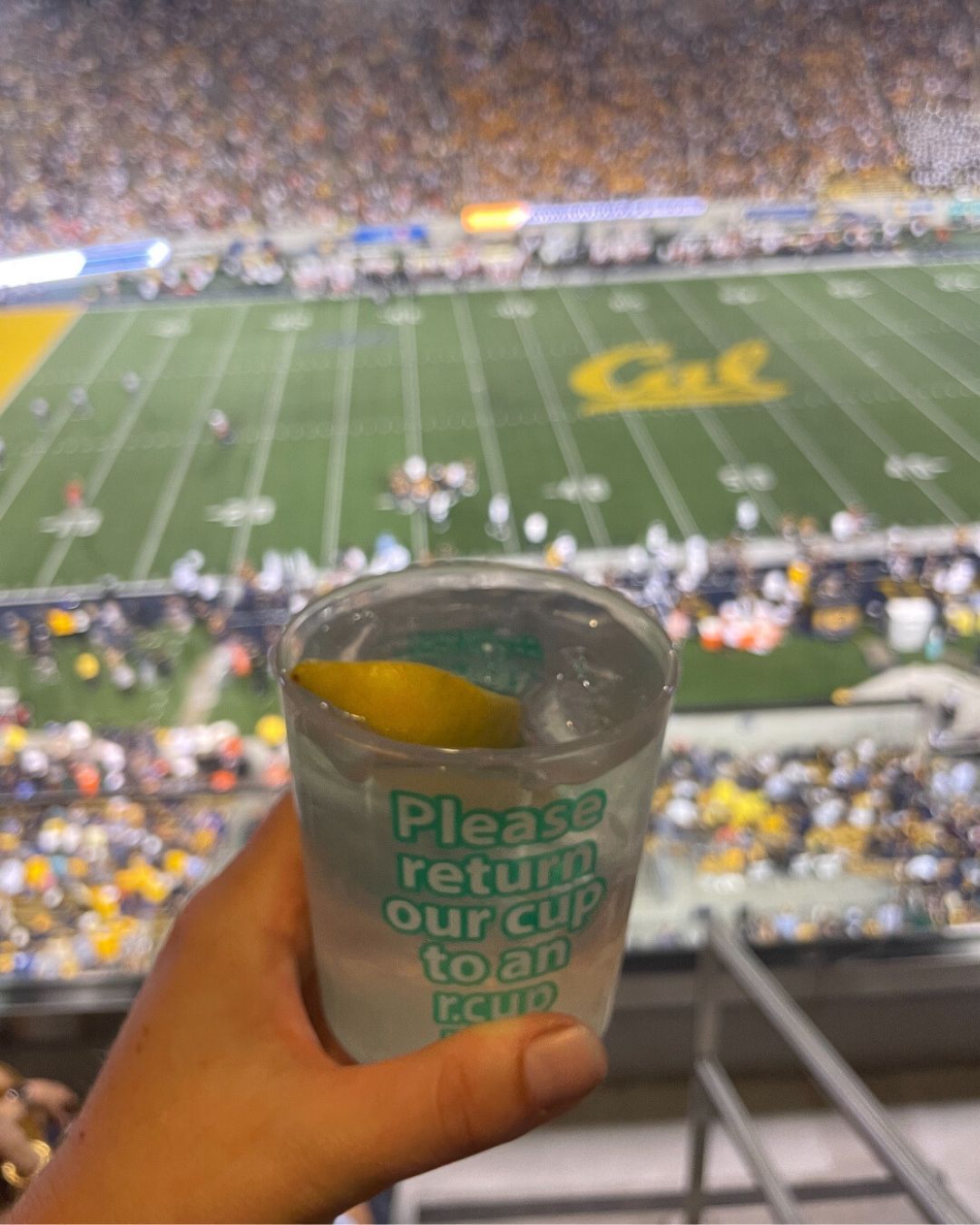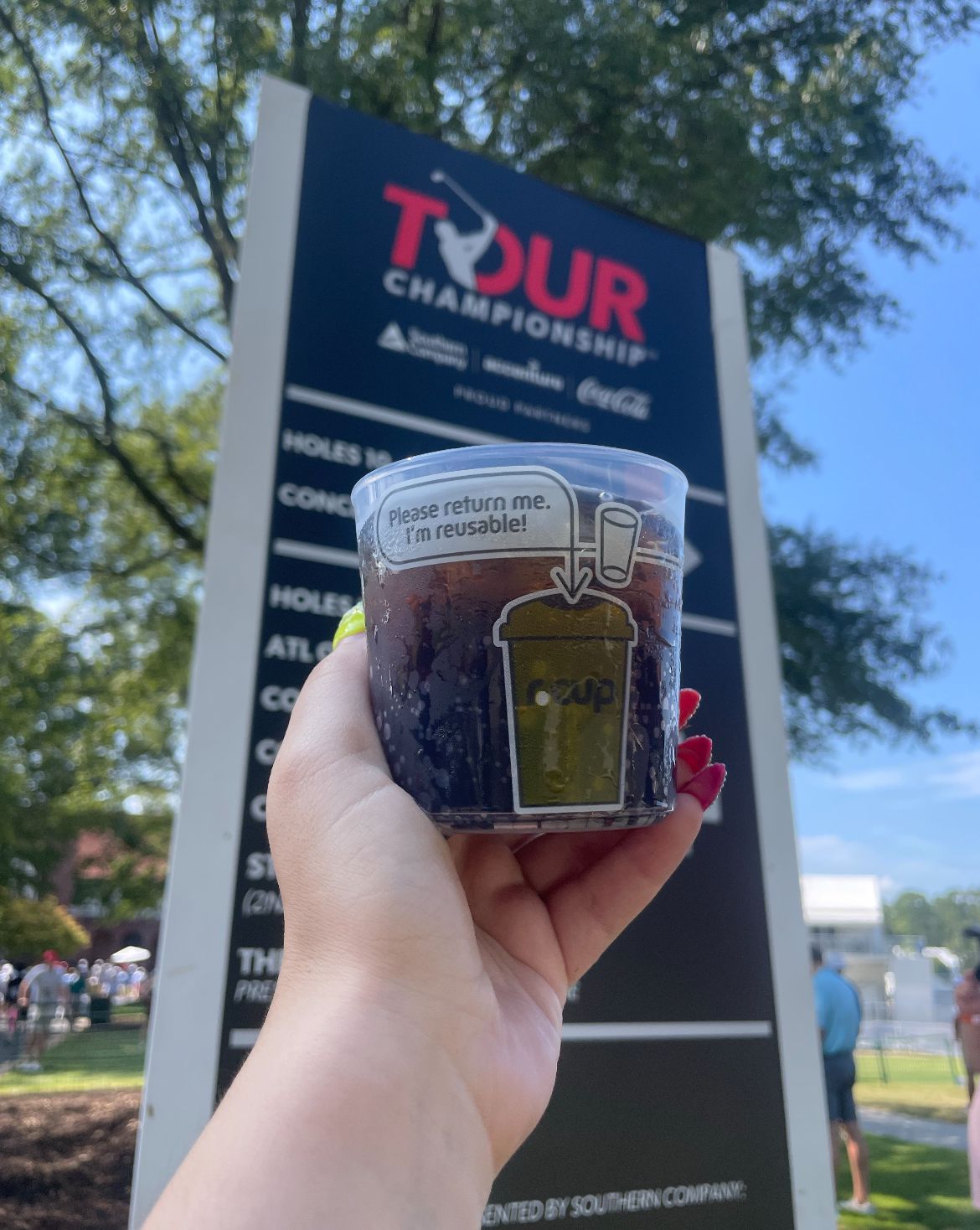- Supercool
- Posts
- 🌐 Reuse, Rock ‘n’ Roll & the Circular Economy
🌐 Reuse, Rock ‘n’ Roll & the Circular Economy
The genius behind r.World's ugly cup to replace 4 billion.
Mike Martin didn’t set out to obtain a proverbial Ph.D. in reusable cups. In fact, as a Wall Street investment banker, his early career was about as opposite as it gets.
But when the Exxon Valdez oil spill washed up on Alaska’s coastline, he had what you might call an environmental epiphany. Mike quit finance to work on something bigger: figuring out how to bend capitalism toward sustainability.
That was 35 years ago. Since then, he has:
Co-produced the first National Earth Day Concert for 500,000 people on the Washington D.C. National Mall
Helped Dave Matthews launch the world’s first climate change tour campaign
Created the first environmental rider for the Steve Miller Band—a document still used by Jack Johnson, Billie Eilish, and touring musicians worldwide
Implemented the sustainability strategy for LiveNation
Built the Music Sustainability Alliance, a 3,000-member industry coalition to green operations and amplify climate action across the music business
It’s a legacy that led Billboard Magazine to name Mike Martin the “Guru of Live Event Greening.”

Paul McCartney headlined the 1993 National Earth Day concert at the Hollywood Bowl, marking his first return to the U.S. since touring with the Beatles. Mike Martin (right) was by his side.
But the role that makes me pray I never follow after him at Parent Career Day: he’s the longtime environmental advisor to U2.
If you were lucky enough to catch U2 at the Sphere in Las Vegas, you’ve already seen Mike’s latest idea in action.
You drank from it.
It’s called the r.Cup—a durable, intentionally ugly, returnable cup designed not to be stolen, loved, or Instagrammed.

The r.Cup at the Sphere in Las Vegas for U2’s concert run.
Just used over and over again.
But Mike’s not building a cup company. He’s building r.World, a circular economy infrastructure company.
The idea took hold nearly a decade ago while he was on tour in Europe with U2.
When zero-waste didn’t work
Mike spent 25 years trying to make recycling and compostables work at live events. He had everything dialed in—perfect signage, compostable packaging, fan incentives, even “trash goalies” to coach people in real-time.
They did everything right. Still, 90% of the waste ended up in landfills.
This wasn’t an isolated problem. In North America alone, an estimated 3 to 4 billion single-use plastic cups are thrown away at live events every year.
That maps to what the OECD has been tracking for years: a global plastic waste crisis. Only 9% of plastics are recycled annually. In the U.S., it’s 4.5%.
Zero-waste, it turns out, has been more feel-good wish-casting than attainable reality.
“I got depressed for six months. I’d spent my career trying to fix this—and it still wasn’t enough,” Mike told me.
Then he remembered what he’d seen while on The Joshua Tree tour in 2017: Reusable cups in packed European stadiums.
“That was the moment. I thought—why aren’t we doing that here?”
The path to 300 uses
Mike founded r.World with one mission: to build a system that makes reuse simple, cost-effective, and scalable.
He calls it his Ph.D. in cups, earned not in a classroom but at every sticky, beer-soaked concert venue around the globe.
Here’s what anchors r.World’s approach:
Durable cups used up to 300 times
“Ugly by design,” so fans don’t take them home
No deposits, no app downloads—just drink and return
QR codes to educate users on the waste crisis
RFID technology to track items through their entire lifecycle
Wash hubs in Los Angeles, San Francisco, Seattle, Las Vegas, Denver, Minneapolis–St. Paul, and D.C. that employ second-chance workers
AI-enhanced sanitation from Ecolab for quality control
An app that makes ordering and tracking as simple as a click
The results from 2024:
94% average return rate
9 million reusable cups and serveware delivered
30 tons of waste prevented from going to landfills, incinerators, or the environment
33 tons of virgin plastic avoided
Not all cups are created equal
After years in the trenches—touring, testing, and obsessing over waste—Mike learned that most alleged sustainable alternatives don’t deliver on their promises.
“The worst thing you can do for the environment is a single-use aluminum cup. Next worse is compostable. Next better is single-use plastic. And best—by far—is reuse.”
Here’s the breakdown:
❌ Single-use aluminum cups
→ Generate 86% more carbon emissions than single-use plastic.
→ Despite their image, they’re one of the worst options for live events due to high energy demands and one-and-done usage.
❌ Compostables
→ Require energy-intensive crops, specialized industrial composting, and perfect sorting.
→ Often contaminate recycling streams and still wind up in the landfill.
✅ Reuse
→ Beats all alternatives after just 20–25 uses.
→ Works because it’s built on infrastructure: recovery, washing, redeployment—not wishful thinking.
Where’s the r.Cup?

California Berkeley became the first college football stadium to embrace 100% reuse in 2024 for all home games, eliminating 41,000 single-use cups from landfills.

The Crypto.com Arena in Los Angeles has also gone 100% reuse with rWorld. Catching a Lakers game? Enjoy your r.Cup.

The PGA Tour are r.Cup reuse fans.

Bille Eilish embraced r.Cups for sold-out shows at the SAP Center in San Jose, CA.

Red Rocks, the most popular outdoor concert venue in the U.S., now uses rCups.
Today, r.World powers reuse in hundreds of venues and events across North America. This spring, the company will add the Coachella music festival to its lineup.
Next Stop: 30,000 Feet
We’ve all had that deflating moment on an airplane—watching the flight attendant roll by with the trash bag and knowing every single cup, wrapper, and container is headed straight to a landfill. No sorting. No recycling. No second life.
It’s one of the most visible, frustrating reminders of how wasteful our systems still are. Any airline that figures out reuse stands to enhance its brand and generate passenger goodwill.
On National Reuse Day in October 2024, r.World teamed up with Alaska Airlines to test precisely that: a closed-loop reuse system on flights from Seattle to Minneapolis.
The result?
“The passengers loved it. The flight attendants loved it. They feel like schmucks going through these millions of single-use cups and just throwing them out,” said Mike.
But flying reuse isn’t just about swapping in a better cup. It’s about solving for every detail: tray size, stacking dimensions, weight, sanitation, and security clearance.
So Mike’s team scoured the globe for a solution and identified a new nitrogen-infused plastic cup. It’s lighter, insulated, stackable, 50% less plastic, and built to insulate hot or cold beverages.
And this is just the beginning.
r.World is now in talks with 15 more cities to open new wash hubs. Major event producers and national brands are lining up. Airlines are interested but need to see a national solution.
“That’s what we’re building,” said Mike.
Supercool Takeaway
To become firmly entrenched, the circular economy can’t just be a marketing concept. It has to be built.
That means infrastructure. Logistics. Operations. It means understanding what works on the ground—and at 30,000 feet.
Mike Martin isn’t trying to sell you a greener cup. He’s building the backbone of a circular economy that can integrate into the places we travel, do business, and recreate.
Not a cup. A system.
And it’s already here.
On this week’s episode of Supercool, Mike shares what he’s learned from decades of greening live events—and why designing a cup everyone wants to use but no one wants to keep is key to cutting waste everywhere.
Listen to this podcast episode on Apple, Spotify, YouTube, and all other platforms.
↓
Stat of the Week: 10%
That’s the level of reuse the world needs to keep half of all plastic waste from reaching the ocean. Scaling solutions like r.World is essential.
Quote of the Week
“There’s several reasons why it’s hard to get reusable. And you can apply this to societal change in a lot of issues. There’s misinformation or lack of information. There’s inertia. There’s apathy. There’s economics. There’s convenience. You have to overcome all those factors.”
- Mike Martin, Founder & CEO of r.World
↓
Is the golden age of American manufacturing about to be unleashed? From a low-carbon perspective, much is already underway. Innovation, reuse, and circular systems are reshaping materials, manufacturing, energy, and even space exploration.
Metal
With virgin metal prices in the U.S. at historic highs, scrap is now the most cost-effective and sustainable option. In Chicago, Greenway Metal Recycling builds local circular supply chains—collecting scrap from automotive, appliance, and construction businesses, processing it, and delivering it to steel mills, foundries, and smelters. Over the past decade, the company has recycled 100,000 tons of metal.
Methane
Ohio has become a destination for out-of-state trash, driven by cheap land and low tipping fees. At one of Northwest Ohio’s largest landfills, Vision RNG is investing $100 million to capture methane that would otherwise be flared and instead process it into pipeline-quality natural gas. The EPA calls it “beneficial reuse”—converting pollution into usable products.
Batteries
The power grid needs large-scale energy storage to stabilize operations and profitably use intermittent renewables like solar and wind. In Texas, the world’s largest grid-storage project powered entirely by used electric vehicle batteries is now online. The company behind it, Element Energy, has developed new hardware and software to make second-life batteries reliable at scale.
Rockets
Then there’s SpaceX. The company’s Falcon 9 rocket just set a new reuse record for the shortest turnaround between flights, shrinking the timeline from 14 days to nine. It also returned to Vandenberg Space Force Base a mere 7.5 minutes after takeoff, accomplishing its fourth mission.
↓
Not yet subscribed to Supercool?
Click the button below for weekly updates on real-world climate solutions that cut carbon, boost the bottom line, and improve modern life.
🌐
